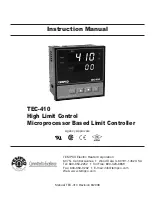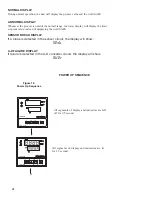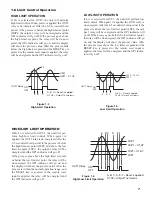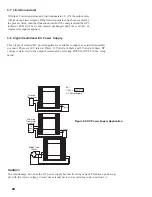
12
2–4 Power Wiring
The controller is designed to operate at
11–26VAC/VDC to 90–250VAC. Check that the
installation voltage corresponds to the power rating
indicated on the product label before connecting
power to the controller. Near the controller a fuse
and a switch rated at 2A/250VAC should be
equipped as shown in Figure 2-4.
This equipment is designed for installation in an
enclosure which provides adequate protection against
electric shock. The enclosure must be connected to
earth ground.
Local requirements regarding electrical installation should
be rigidly observed. Consideration should be given to pre-
vent unauthorized personnel from accessing the power ter-
minals.
2–5 Sensor Installation Guidelines
Proper sensor installation can eliminate many problems in a
control system. The probe should be placed so that it can
detect any temperature change with minimal thermal lag. In
a process that requires fairly constant heat output, the probe
should be placed close to the heater. In a process where the
heat demand is variable, the probe should be close to the
work area. Some experimentation with probe location is
often required to find the optimum position.
In a liquid process, the addition of agitation will help to
eliminate thermal lag. Since the thermocouple is basically a
point measuring device, placing more than one thermocou-
ple in parallel will provide an average temperature readout
and produce better results in most air heated processes.
Proper sensor type is also a very important factor in obtain-
ing precise measurements. The sensor must have the correct
temperature range to meet the process requirements. In spe-
cial processes, the sensor might have requirements such as
leak-proof, anti-vibration, antiseptic, etc.
Standard sensor limits of error are ±4°F (±2°C) or 0.75% of
the sensed temperature (half that for special limits of error)
plus drift caused by improper protection or an over-temper-
ature occurrence. This error is far greater than controller
error and cannot be corrected on the sensor except by prop-
er selection and replacement.
90 250 VAC or
11 26 VAC / VDC
~
~
Fu
s
e
1
2
3
4
5
6
7
8
9
10
11
12
13
14
15
16
17
18
19
20
Figure 2.4
Power
S
upply Connections
2–6 Thermocouple Input Wiring
Thermocouple input connections are shown in figure 2-5.
The correct type of thermocouple extension lead-wire or
compensating cable must be used for the entire distance
between the unit and the thermocouple, ensuring that the
correct polarity is observed throughout. Junction/terminal
blocks or splices in the cable run should be avoided, if pos-
sible.
If the length of the thermocouple plus the extension wire is
too long, it may affect the temperature measurement. A 400
ohms K type or a 500 ohms J type thermocouple lead resist-
ance will produce approximately 1°C temperature error.
1
2
3
4
5
6
7
8
9
10
11
12
13
14
15
16
17
18
19
20
1
1
2
2
3
3
4
4
ON
O
N
+
Dip
S
witch
—
Figure 2.5
Thermocouple Input Wiring
Summary of Contents for TEC-410
Page 26: ...24 ...















































